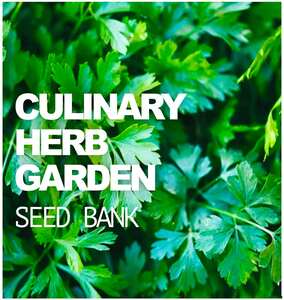Sustainable Gardening Practices for an Eco-Friendly Garden
Sustainable Gardening Practices for an Eco-Friendly Garden
Blog Article
The Comprehensive Overview to Gardening: Discover the Benefits of Various Styles and Strategies
Gardening includes a varied range of designs and approaches, each offering one-of-a-kind advantages tailored to private choices and ecological contexts. From the structured beauty of official gardens to the natural appeal of permaculture, comprehending these variations is crucial for cultivating an area that not only flourishes but likewise reflects personal values and aesthetics. In addition, sustainable methods play an important duty in boosting regional ecological communities and guaranteeing long-lasting success. As we check out these various designs, it comes to be obvious that the choices made can dramatically affect both the yard's wellness and its contribution to the surrounding environment.
Comprehending Horticulture Essentials
Recognizing the basics of gardening is essential for growing a prospering and lasting yard. A successful gardening endeavor begins with a solid structure of knowledge regarding dirt, plant selection, and climate factors to consider.
Picking the right plants is similarly crucial. Comprehending their particular demands-- such as sunlight, water, and spacing-- makes sure compatibility with the neighborhood environment and soil problems. This option process should likewise consider the growth practices and lifecycle of plants, permitting for a balanced and cosmetically pleasing garden.
Additionally, efficient watering practices are crucial. Over-watering and under-watering can both bring about plant anxiety and condition. Implementing a routine based upon seasonal adjustments and plant requirements can improve water efficiency.
Popular Gardening Styles
What specifies the essence of preferred horticulture styles? These styles encapsulate varied aesthetic principles, useful demands, and environmental considerations, ultimately reflecting the gardener's personal vision. Among the most distinguished designs is the cottage yard, identified by its informal design and a lively variety of blossoms and veggies. This method emphasizes an unified mix of color and texture, developing an inviting atmosphere.
On the other hand, the formal yard embodies symmetry and order, frequently including geometric patterns and carefully cut bushes. This design communicates elegance and elegance, with very carefully chosen plants that strengthen a structured visual.
The Japanese yard offers a serene and meditative experience, making use of all-natural aspects like water, stones, and plants to produce a peaceful environment. It concentrates on simplicity and equilibrium, encouraging reflection.
Furthermore, xeriscaping has actually gained popularity, specifically in arid areas (Gardening). It prioritizes drought-resistant plants and efficient water usage, advertising sustainability while improving landscape beauty
Benefits of Container Horticulture
Container gardening uses a plethora of advantages that make it an attractive option for both amateur and seasoned garden enthusiasts alike. One of the main benefits is adaptability; containers can be put in learn the facts here now various areas, permitting gardeners reference to enhance sunlight direct exposure and create visually enticing arrangements. This flexibility makes it feasible to garden in spaces where typical in-ground horticulture might not be viable, such as terraces, outdoor patios, or urban settings.
Furthermore, container horticulture offers much better control over dirt problems. Gardeners can customize the dirt mix to match certain plants, ensuring ideal drain and nutrient availability. This is especially valuable for people staying in areas with bad or polluted soil.
One more significant benefit is the minimized risk of parasites and diseases. Container plants can be monitored a lot more quickly, and any type of problems can be dealt with quickly. This strategy can decrease the spread of intrusive species.
Sustainable Gardening Practices
Lasting horticulture methods are necessary for advertising environmental health and enhancing biodiversity in our communities. These methods focus on eco-friendly balance, source preservation, and making use of natural techniques to minimize adverse environmental effects. By employing techniques such as composting, garden enthusiasts can reduce waste while enriching soil health, consequently cultivating a thriving garden community.
Water preservation is another important facet of sustainable horticulture. Techniques such as rain harvesting, drip irrigation, and making use of drought-resistant plants can significantly lower water usage while making sure that plants obtain adequate dampness. In addition, integrating indigenous plant types into yard click for info designs sustains neighborhood wildlife and lowers the demand for chemical plant foods and pesticides, which can be dangerous to the setting.

Inevitably, sustainable gardening techniques not just contribute to much healthier gardens but additionally promote a more resilient environment, using long-term advantages to both the garden enthusiast and the bordering neighborhood.
Tips for Successful Horticulture
To grow a growing garden, gardeners ought to focus on careful preparation and thoughtful implementation of their gardening strategies. Begin by examining the regional environment and dirt conditions, as these elements considerably influence plant selection and growth. Select plants that are well-suited to your setting, thinking about indigenous varieties that will love minimal treatment.
Applying a well-structured format is important (Gardening). Utilize buddy growing techniques to promote biodiversity and all-natural parasite control, while making sure each plant has ample room for development. This not only boosts aesthetics yet also boosts overall plant wellness
Normal upkeep is essential to a successful yard. Establish a constant routine for watering, weeding, and feeding. Mulching can aid preserve dampness and reduce weeds, while additionally including raw material to the soil.
On a regular basis checking plant wellness and development will enable for prompt treatments. Be open to discovering and adjusting; gardening is a continuous procedure that profits from experience and experimentation.
Verdict


In recap, the expedition of varied gardening designs and approaches reveals their multifaceted advantages, contributing to both aesthetic allure and ecological health. Container horticulture supplies adaptability and availability, while sustainable techniques enhance ecological stewardship. By integrating different methods and approaches, garden enthusiasts can optimize their efforts, advertise biodiversity, and produce useful outdoor rooms. Eventually, this extensive overview offers as a valuable resource for growing successful horticulture experiences, promoting a much deeper link with nature and the bordering environment.
Report this page